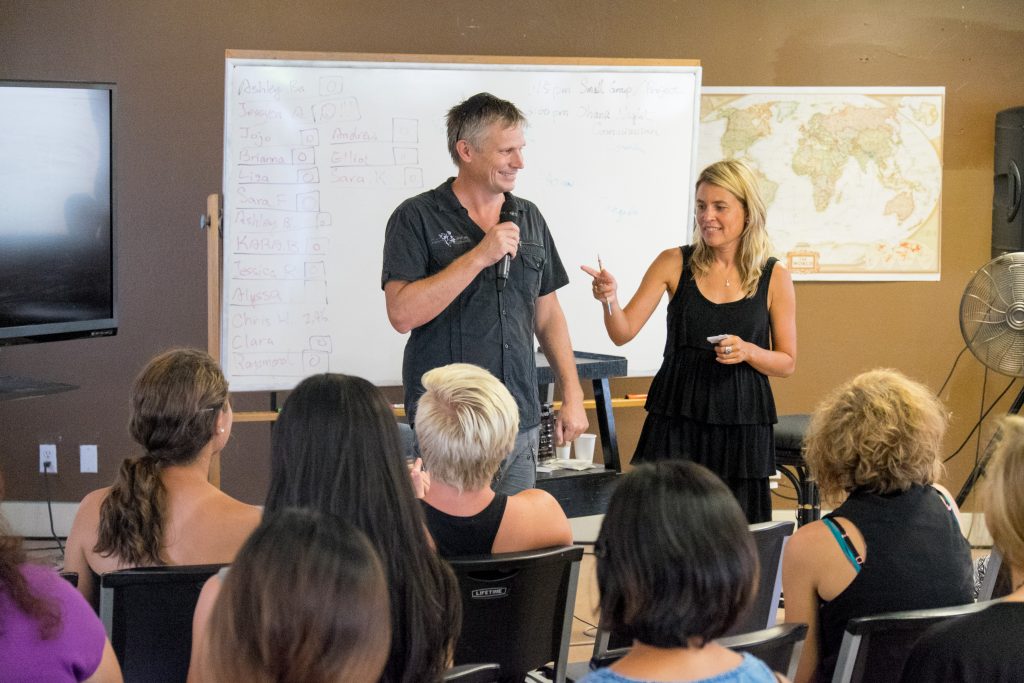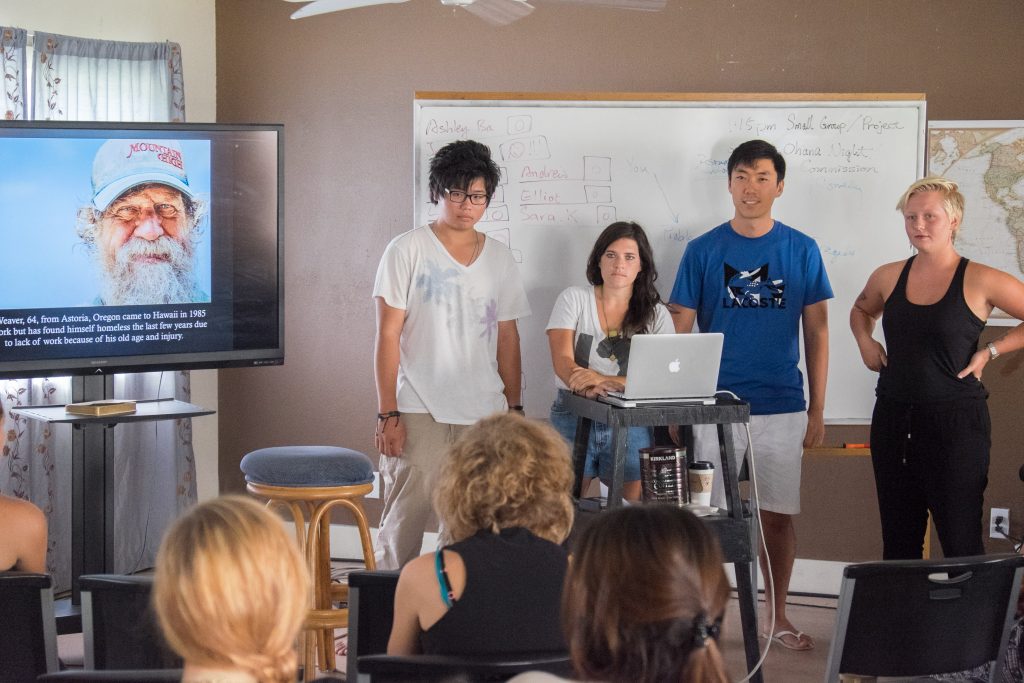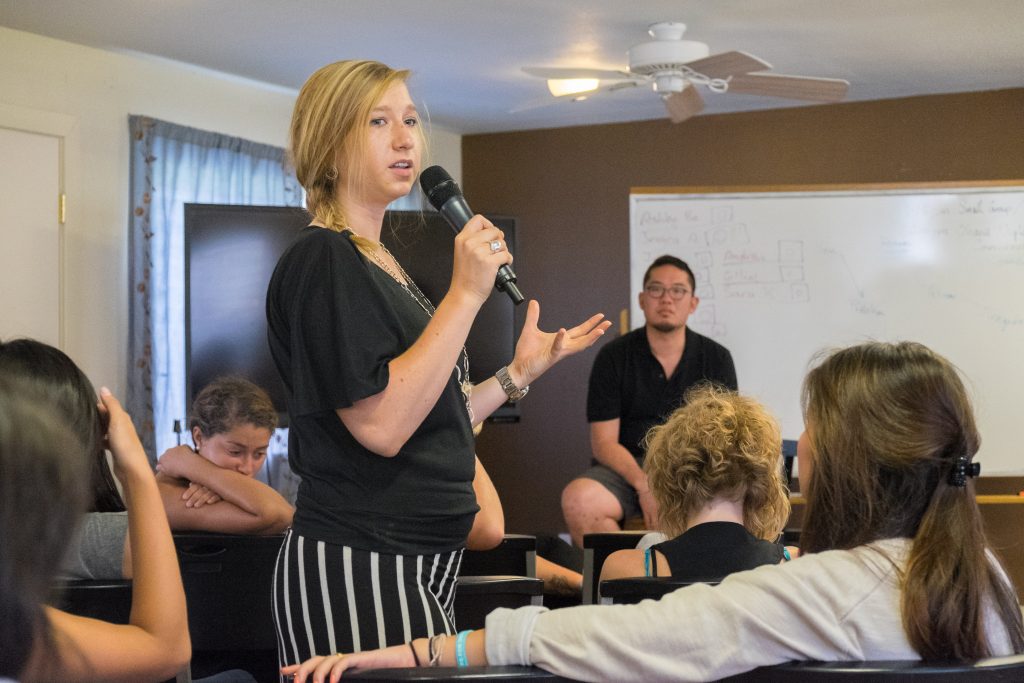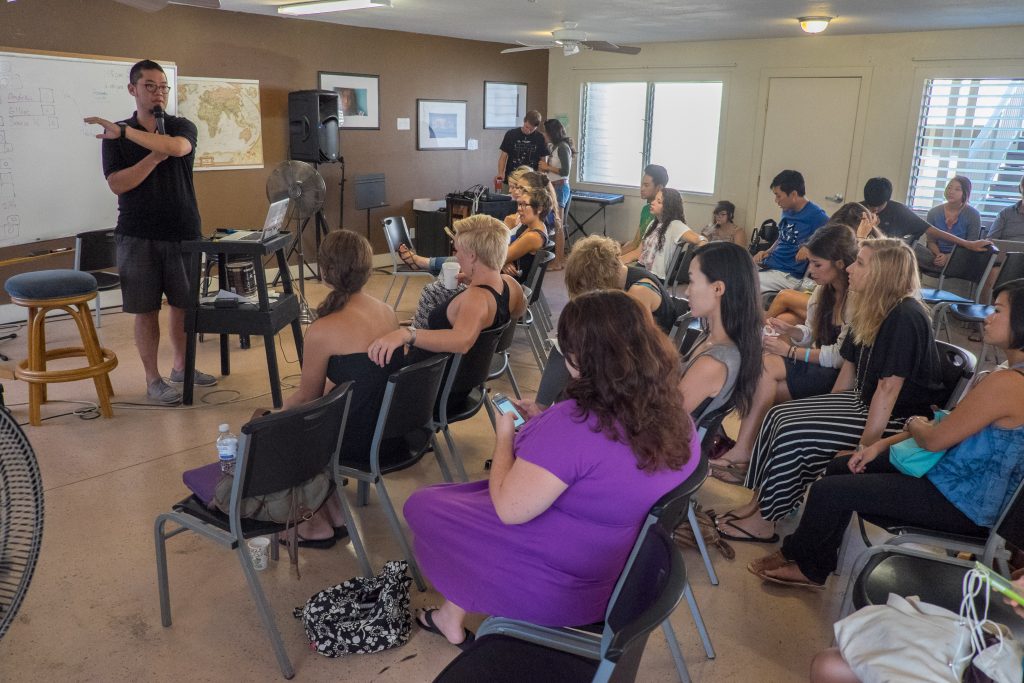Fuji X-E2, 18-55mm, ISO 6400, ƒ/3.6, 1/210
Team Photo Story?
Today, I saw the work of seven teams assigned themes. Each team had to find a story on the Big Island of Hawaii to do as a team. This is the first time I have seen this done. Usually, in photo schools, each person is given a story and works on it alone.
This class aims to give young people a Discipleship Training School, where they spend a month preparing to go to another country to work on a project. These projects include orphanages, sex trafficking, and other social justice issues.
To help teach everyone how to engage with people cross-culturally, they use the camera to help guide this skill. However, most of these Discipleship Training Schools do not use photography.

Paul and Suzi Childers had this vision of using photography for a DTS. Suzie is a professional portrait photographer by trade and saw this would work to help teach cross-cultural skills and help the students make connections.
This week, I taught students how to get permission to take photos in cross-cultural settings and how photojournalism techniques can help them get to know people.

Working as a team, they could shoot different angles and let one person concentrate on most of the talking. Then, another person could take notes and gather content using a recorder or video on their camera.
One group let the subject tell their own story, and they used photos that they set up to help illustrate some of the concepts.
One group combined an illustrative/conceptual photography approach with reading the story to the group.
A few groups wrote captions, displayed them on the screen, and then arranged the photos in a more photojournalistic sequence.

After each group presented, their peers gave feedback. Finally, the leader asked them to provide positive comments and suggestions for improvement. Please don’t say you don’t like the photo; tell them what they could have done to improve it.
Earlier in the week, I posted coverage of mine, which I only told them about quite a ways into the critique. I asked each person to look at a photo and tell me what they saw as wrong. Each person commented that the others had yet to do better.
One of the students, Manny, said one of my photos looked amateurish. Since the critique session was intended to teach them how to give constructive criticism, I let him off by having him tell everyone why it was unprofessional and what he thought would make it better.
Some of the students at first thought we were arguing. They all learned that sometimes, you must ask someone to clarify their comments. Even when they are saying your photo is crap. Why is it crap?

I would offer to join them and critique each day if they paid my expenses and made up the income for the next two months, but I need more practice. What made much more sense was to help them understand how to look at photos and whether discussing a photo worked or didn’t work.
They were learning how to listen to feedback in life. Hopefully, this process will teach them how to build community and grow mature as they learn to serve one another.
I can’t wait to see their work from around the world. The group will split up to visit Panama, Turkey, Germany, Thailand, and China.

